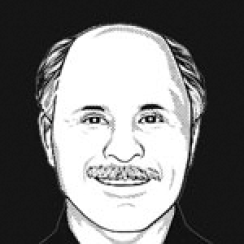Crispin Odey’s Odey European fund plummeted 19.3 percent in April. As a result, the fund is now down 18.2 percent this year, through the first four months. Odey has been heavily short equities since June of 2014. However, the fund has been profitable thanks to its long position in the U.S. dollar versus the Australian dollar. It has also experienced significant gains from other currency trades. Odey European surged 11.7 percent in December fueled by the U.S. dollar-Australian dollar trade. In addition, Odey was short equities at the time, especially European companies with emerging markets and commodities exposure. This came on the heels of a 5 percent gain in November, enabling Odey to reverse a sharp loss taken earlier in the year, and finish 2014 up 5.5 percent. However, the sharp decline in the dollar in late April reversed some of Odey’s gains, according to an investor. In addition, Odey has been hurt by its short equity position. Even so, Odey is said to still be bearish, as its net equity exposure has ranged between plus 10 percent and negative 10 percent in what is said to be a much reduced equity book. The fund is operated by London-based Odey Asset Management.
___
David Tepper’s Palomino Fund slipped back slightly in April, dropping about 0.6 percent. Even so, his Short Hills, New Jersey hedge fund is up more than 11 percent for the year after gaining just 2.2 percent in 2014.
___
Leon Cooperman’s Omega Overseas climbed 2.3 percent in April and is now up 5.4 percent for the year. At the recent SALT conference, he reiterated past assertions that the bull market still has room to run although he is bearish on bonds.
___
Bridgewater Associates, the world’s largest hedge fund firm, continues to devote the bulk of its U.S. equity assets to exchange-traded funds. At the end of the first quarter, about 86 percent of the macro giant’s $12.8 billion U.S. stock portfolio is invested in three ETFs — two that track various emerging markets indices, which combined account for 60 percentage points of the 86 percent, the rest earmarked for an ETF that tracks the movement of the Standsard & Poor’s 500. By contrast, its large single stock holding, Apple, only accounts for 0.71 percent of U.S. equity assets.
___
One day after DuPont prevailed in its proxy fight with activist hedge fund firm Trian Fund Management, at least two investment banks pledged their commitment to the stock in different ways. Deutsche Bank repeated its Buy rating and $83 target price for several reasons. In a note to clients, the German bank noted that the “shares are poised to move higher” in light of Monsanto’s recent offer to acquire Syngenta, asserting the multiple being paid in the deal “established a new market value for a crop-protection chemical-heavy Ag business.” The bank told clients that DuPont’s seed-heavy agricultural business would warrant an even higher valuation “due to seeds historically higher margins and higher growth than crop protection chemicals.”
Credit Suisse maintained its Neutral rating and $77 target price for DuPont, noting the company “has recently taken several measures to excite shareholders and maximize value.” The Swiss bank cited cost-cutting initiatives; a $5 billion stock buyback plan, the upcoming spinoff of its TiO2 business and two new board members. Even so, the bank is concerned that the stock may experience short-term pressure, in part due to the possibility that Trian may dump its stock holdings, which would be followed by other short-term oriented investors. “Some longer-term investors may have hoped that the Trian slate might push for further cost cuts and efficiency measures in a more aggressive way than DD [DuPont ticker] has,” Credit Suisse adds.
___
Asian hedge funds pulled in a net $1.11 billion in the first quarter, boosting total assets to $120.71 billion, according to HFR. This is up from $113.91 billion in assets one year ago. Altogether, there are now 1,171 Asia-focused funds, up a net nine from 12 months ago. The HFRI EM: Asia ex-Japan Index gained 10.5 percent in April, its best performance since December 1999. Through the first four months of 2015, the index has risen 14.5 percent. The HFRI China Index is up 18.8 percent through April.






